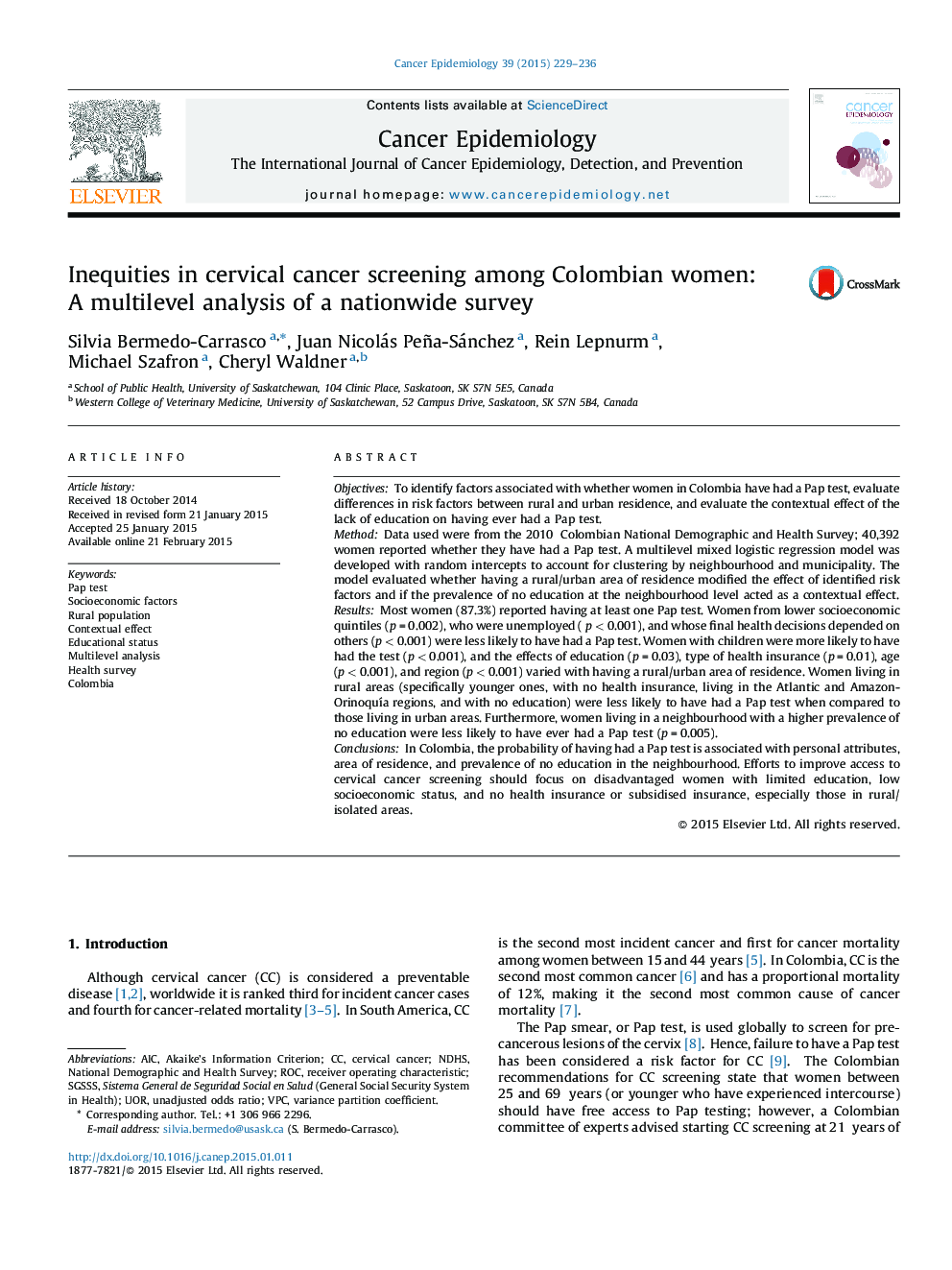| Article ID | Journal | Published Year | Pages | File Type |
|---|---|---|---|---|
| 2108894 | Cancer Epidemiology | 2015 | 8 Pages |
•Almost 13% of women between 18 and 49 years in Colombia had never had a Pap test.•Having a Pap test differs by socio-demographic and neighbourhood factors.•Women in disadvantaged socioeconomic groups are less likely to have a Pap test.•Living in rural areas has a negative impact on having had a Pap test.•Pap testing decreases as the prevalence of no education in neighbourhoods increases.
ObjectivesTo identify factors associated with whether women in Colombia have had a Pap test, evaluate differences in risk factors between rural and urban residence, and evaluate the contextual effect of the lack of education on having ever had a Pap test.MethodData used were from the 2010 Colombian National Demographic and Health Survey; 40,392 women reported whether they have had a Pap test. A multilevel mixed logistic regression model was developed with random intercepts to account for clustering by neighbourhood and municipality. The model evaluated whether having a rural/urban area of residence modified the effect of identified risk factors and if the prevalence of no education at the neighbourhood level acted as a contextual effect.ResultsMost women (87.3%) reported having at least one Pap test. Women from lower socioeconomic quintiles (p = 0.002), who were unemployed (p < 0.001), and whose final health decisions depended on others (p < 0.001) were less likely to have had a Pap test. Women with children were more likely to have had the test (p < 0.001), and the effects of education (p = 0.03), type of health insurance (p = 0.01), age (p < 0.001), and region (p < 0.001) varied with having a rural/urban area of residence. Women living in rural areas (specifically younger ones, with no health insurance, living in the Atlantic and Amazon-Orinoquía regions, and with no education) were less likely to have had a Pap test when compared to those living in urban areas. Furthermore, women living in a neighbourhood with a higher prevalence of no education were less likely to have ever had a Pap test (p = 0.005).ConclusionsIn Colombia, the probability of having had a Pap test is associated with personal attributes, area of residence, and prevalence of no education in the neighbourhood. Efforts to improve access to cervical cancer screening should focus on disadvantaged women with limited education, low socioeconomic status, and no health insurance or subsidised insurance, especially those in rural/isolated areas.
